An early 15thc headdress in blue silk, gold braid and mounts.
I offered to make headwear for my friend Miriam, to match her new court garb – an early 15th century English sideless surcoat.

Research and Design
The headwear needed to cover all her hair (but not her ears), and be wearable alone or under a crown. Her preferred colours were blue and gold.
I found inspiration in the effigy sculpture of Lady Mainwaring, c1410, depicted in A Visual History of Costuming (Scott 1986). Although she was wearing a houppelande, the style would also work with the formal surcoat and had the right elements – above the ears, covering the hair, and a fine pinned-on veil.
This style of headwear was worn by ladies of the nobility in the late 14th and early 15th centuries, and was known by several names – crespine, crespinette, caul or tire.
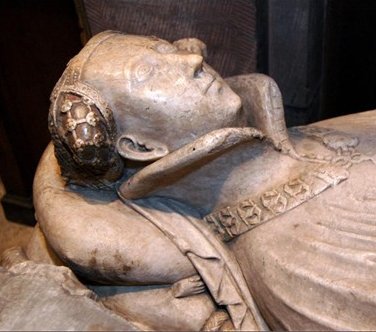
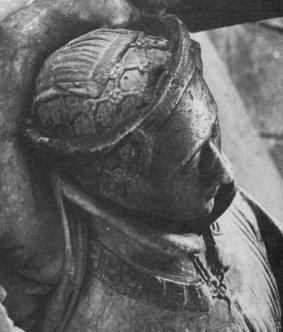
Construction
The first challenge was to size the side cases – they needed to sit above the ears, but below the crown – not much room! I padded up the head-form, made a 3 piece coif toile to work on, and a card circlet to stand in for the crown
I used stiff paper to make a 3D version of the cases– large in the middle and tapering to nothing on all sides. I made a paper pattern over the top of these, then cut it out in stiff felt, sewed this up and tested it out.
Once I was happy with the pattern, I made a basic linen coif, sewed up and attached the felt case supports, then covered this base in bias cut blue silk, working in sections.


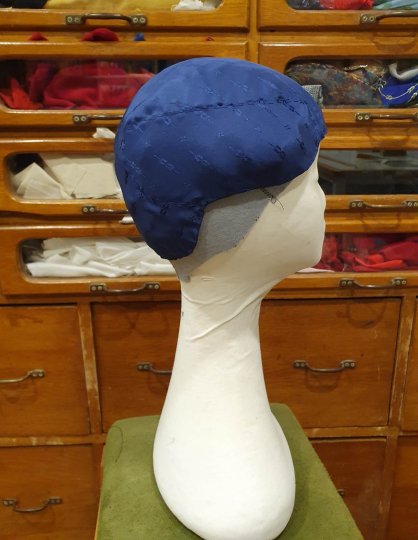
Next step was planning the placement of the net so that it worked well over the heavily contoured shape – always tricky. I worked the side cases as separate sections, to simplify the process and make them stand out.
I stitched the gold network of braid in place, covered the edges with a wider braid and sewed gold quatrefoil mounts over the intersections. To finish it off, I lined the headdress in matching blue linen, slip-stitching this around the edge behind the gold braid.

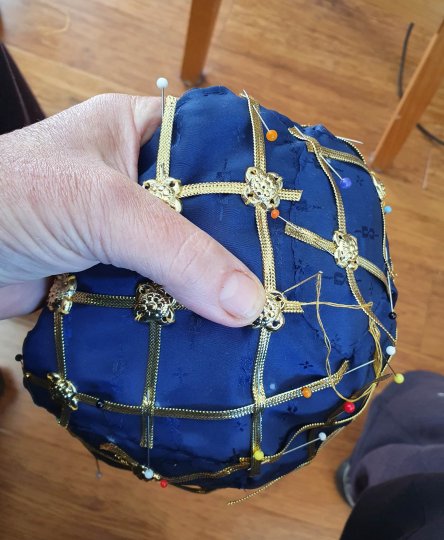
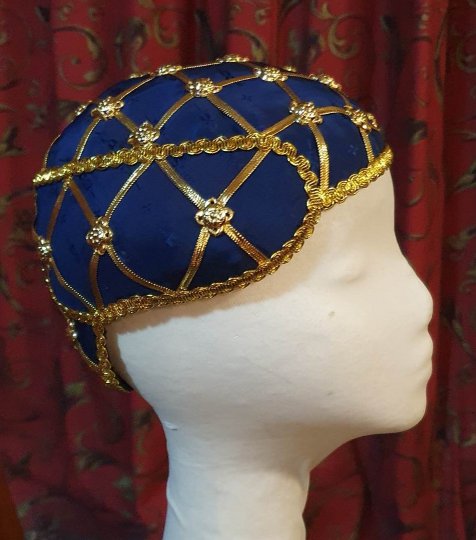
Finally, I made up a small rectangular veil in fine linen, pleated into a band, as seen on the effigy of Lady Mainwaring above. This is pinned on, so it can be removed for washing.

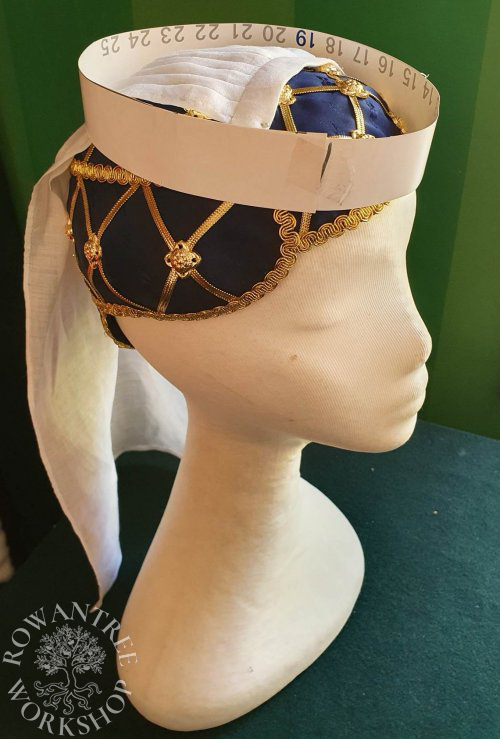
Afterthoughts
I was concerned about whether the cases would make the crown sit badly, so they are not as pronounced as on the effigy. They worked fine, but I think more distinct bulges would have looked even better.


